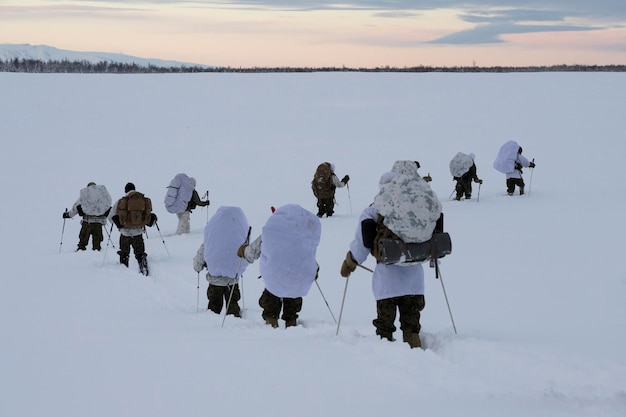Exploring the Fascinating World of the Tundra – 10 Intriguing Facts You Need to Know

The tundra is a vast, treeless region found in the Arctic and subarctic regions.
Despite its harsh conditions, the tundra is home to a surprising diversity of plants and animals.
The Arctic tundra is located within the Arctic Circle, while the alpine tundra can be found at high elevations around the world.
The word tundra comes from the Finnish word tunturi, meaning treeless plain.
The tundra soil is called permafrost because it remains frozen throughout the year.
Some animals, like the Arctic fox, have adapted to the extreme cold temperatures of the tundra.
The tundra is known for its beautiful displays of wildflowers during the summer months.
Many bird species migrate to the tundra during the summer to breed and take advantage of the abundant food supply.
The tundra is one of the Earth’s most fragile ecosystems and is highly susceptible to climate change.
The tundra is an important carbon sink, storing large amounts of carbon dioxide in the permafrost.
The tundra is home to the largest populations of caribou in the world.
The tundra’s short growing season makes it challenging for plants to thrive.
Some tundra plants, such as the Arctic poppy, have adapted by blooming extremely quickly when temperatures rise.
The tundra biome is characterized by its cold, dry, and windy climate.
Despite its cold temperatures, the tundra experiences periods of bright sunlight during the summer months.
Exploring the Fascinating World of the Tundra – 10 Intriguing Facts You Need to Know part 2
The tundra is home to the iconic polar bear, which relies on sea ice for survival.
Many indigenous communities have inhabited the tundra for thousands of years, adapting to the extreme conditions.
The Northern Lights, also known as Aurora Borealis, can often be seen in the tundra regions.
Despite being treeless, the tundra is not completely barren. Mosses, lichens, and low-growing shrubs cover the landscape.
The tundra is an important breeding ground for migratory birds, such as geese and ducks.
The tundra has a low species richness compared to other biomes, but it is rich in endemic species.
The tundra’s extreme cold temperatures slow down biological processes, leading to slower decomposition rates.
The tundra has a unique scent, often described as a mix of damp soil, vegetation, and icy air.
Some tundra animals, like the Arctic hare, change their fur color to blend with the changing seasons.
The tundra’s freezing temperatures act as a natural preservative, allowing the remains of ancient animals to be preserved in the permafrost.
The tundra soil is nutrient-poor, but decomposing organic matter helps release essential nutrients for plant growth.
The tundra is home to the largest land predator in the world – the polar bear.
The tundra is an important breeding ground for many migratory fish, such as salmon.
The tundra’s windswept landscape often creates unique formations, such as frost heaves and patterned ground.
The tundra experiences constant daylight during the summer months, known as the midnight sun.
The tundra is a natural laboratory for studying climate change and its effects on ecosystems.
The tundra’s cold temperatures and lack of trees have inspired various adaptations in animals and plants.
Many species, like the Arctic tern, embark on staggering migrations to and from the tundra.
The tundra’s low temperatures and slow-growing plants make it a challenging environment for bacteria and fungi to thrive.
The tundra’s low precipitation and cold temperatures make it a desert-like environment, despite its frozen landscape.
The tundra is home to many species of colorful fauna, such as the musk ox and lemming.
The tundra’s permafrost can reach depths of up to several hundred meters in some regions.
The tundra’s vast open spaces can create powerful windstorms known as blizzards.
The tundra’s vegetation acts as an important carbon sink, helping to mitigate climate change.
The tundra’s extreme conditions have led to the evolution of dwarf and cushion plants that help trap heat and conserve moisture.
Many tundra animals, like the caribou, migrate long distances in search of food and better conditions.
Despite the cold, the tundra is a vital habitat for insects, some of which can survive freezing temperatures.
The tundra’s rivers and lakes freeze during winter, providing a temporary home for species like seals and walruses.
The tundra is the birthplace of many important global weather patterns, influencing climate systems around the world.
The tundra’s stark beauty and fragile ecosystem serve as a reminder of the Earth’s resilience and vulnerability. I hope you find these statements about interesting facts about the tundra creative and informative!
